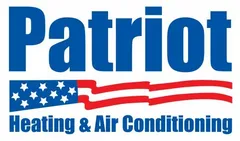Understanding Benefits of Hybrid Heating and How It Works
Heat pumps have been around for over 40 years, but only recently are they gaining popularity in Indiana. Better technology has made these units more efficient, and combining heat pumps with furnaces for when temperatures drop has made them more attractive in areas with colder climates. A system that combines a heat pump and a furnace is called a hybrid system. Hybrid systems alternate heating sources to provide energy savings when temperatures drop below the level at which a heat pump can operate effectively.
How hybrid systems work
The heat pump
When the outdoor temperature is above 40 degrees Fahrenheit or so, a hybrid system heats the house using the heat pump. The heat pump extracts heat from outdoors and pumps it inside via refrigerant-filled coils. The heat is then distributed throughout the house. During the summer, this process is reversed, and heat pumps acts as an air conditioner. It extracts heat from the indoor air and pumps it outside. During winter, heat pumps extract heat from either the air (air-source heat pumps) or the ground (ground-source or geothermal heat-pumps). Both extract heat differently, but otherwise they work similarly.
It is because heat pumps extract heat that they are so efficient. Instead of burning fuel to create heat, they simply take the heat from another source and move it.
Furnaces compensate for heat pump limitations
Used alone, heat pumps work best in moderate climates where the temperature doesn’t regularly fall below 40 degrees. For this reason, they are popular in areas with a long cooling season, such as Arizona or northern Texas. Between 32 and 40 degrees Fahrenheit, most heat pumps lose their ability to move heat efficiently. They must work harder to extract heat and move it indoors. Thus, when the temperature drops, they begin to cost more to operate than a furnace.
When the temperature drops below a set point between 32 and 40 degrees Fahrenheit, the system’s computer switches over heating from the heat pump to a furnace. The exact temperature at which the unit switches depends on factors such as the local climate, fuel costs, and electricity rates.
Benefits of hybrid systems
In a traditional split system, the furnace burns fuel every time the building needs heated, no matter how expensive the fuel. With a hybrid system, the heat pump runs any time the temperature rises above the switch point, and the system as a whole requires less energy to operate. This significantly reduces the costs of energy bills, as the system always uses the cheaper fuel source.
Hybrid systems offer benefits, as well. While the heat pump is running, the house will remain at a fairly constant temperature instead of dropping and rising, as what happens as a furnace turns on and shuts off. Heat pumps continually move air through the house instead of blasting air temporarily like the furnace. Also, because the pumps continually move air, heat pumps help the air feel less stuffy.
Hybrid system owners can glean additional savings from their units by installing a dual-fan system. (As a note, some heat pump systems come with variable-speed blowers, such as the American Standard AccuComfort™ heat pump.) A dual-fan system uses two fans that operate at different speeds. A slower fan operates when the temperature difference between outdoor and indoor air is relatively low, about 10 to 15 degrees Fahrenheit different. When the temperature outside grows frigid, a higher-speed fan kicks on in order to move air more quickly. By not always operating a high-speed blower, they system uses less energy and thus saves on utility costs.
What to consider when purchasing a hybrid heating system
When considering whether to buy a hybrid system, there are several questions you should ask. First, you should consider the climate in your area. If you live too far north, a hybrid system might not work best for you. Most of your savings will occur when the heat pump is running, so if the temperature drops too low for too long, you will not reap the same financial benefits as you would in a milder climate.
Second, you should consider fuel costs for your furnace. Calculate how much you’ll save by using a heat pump during cool weather to find out if and how long it will take for the system to pay for itself. The higher the cost of furnace fuel (oil, natural gas, or propane), the more money a hybrid system will save. Hybrid systems do cost most than split HVAC systems, so you will have to take this into consideration.
Also consider how long you plan on living at your current residence. How long you stay will affect whether you enjoy the financial savings the hybrid system offers.
Patriot Heating and Air Conditioning, located in Franklin, Indiana, offers American Standard hybrid systems, which are perfect for winters in Indiana. If you would like to learn about integrating such a system in your home or business, contact us. We will be happy to answer your questions and help you choose the best HVAC system for your situation.
